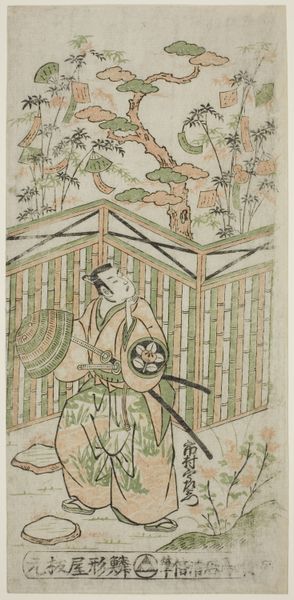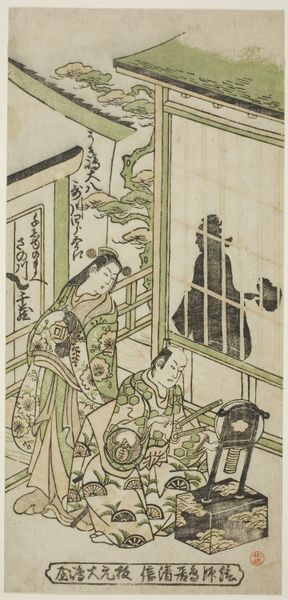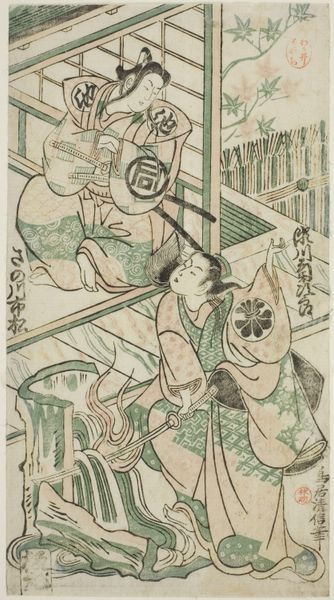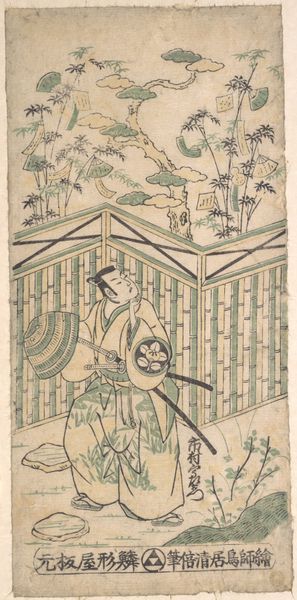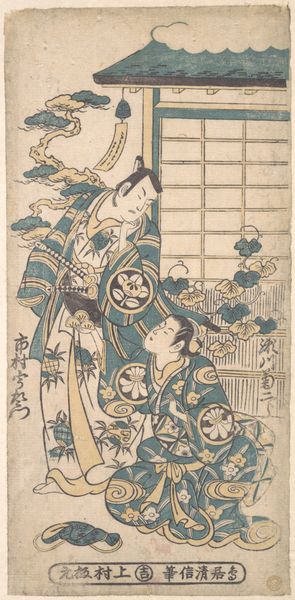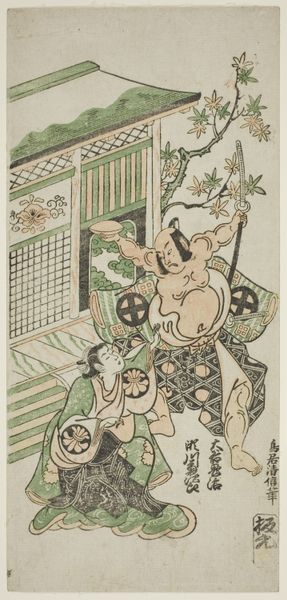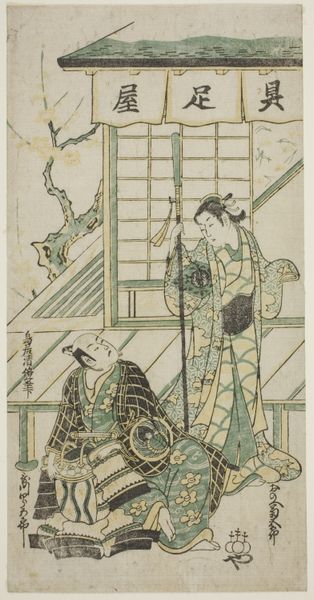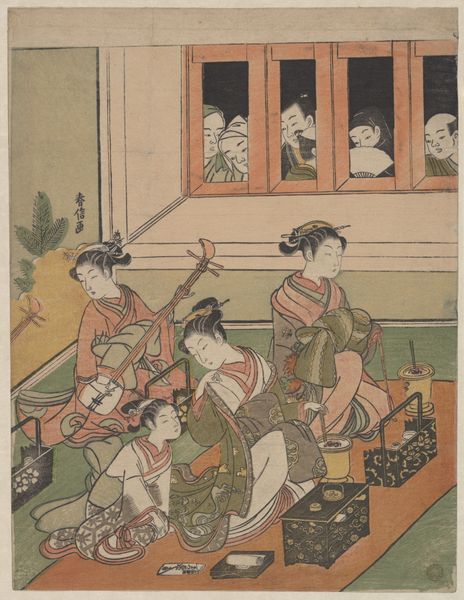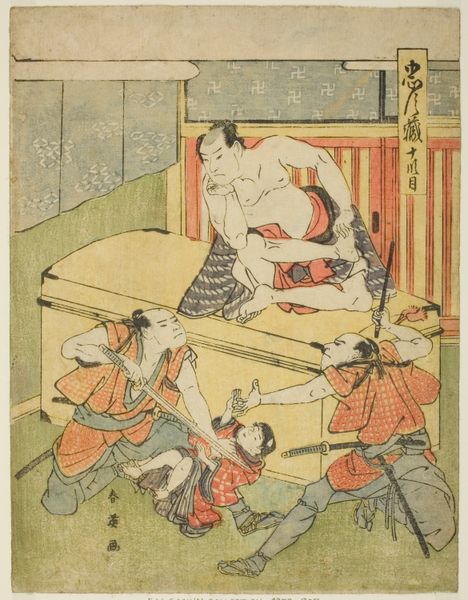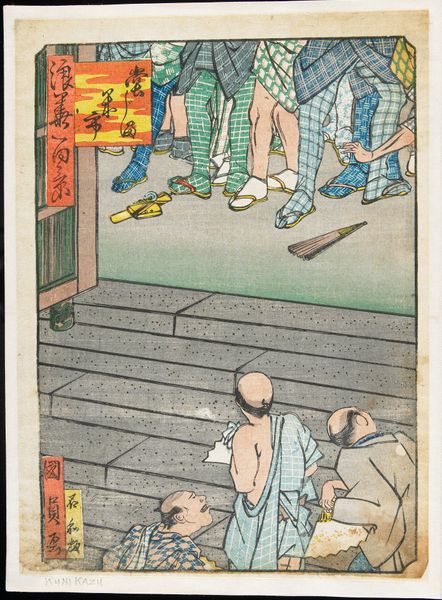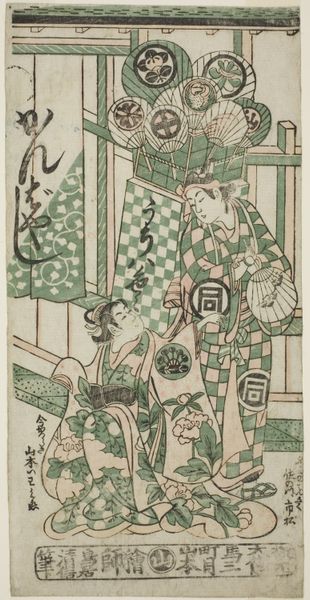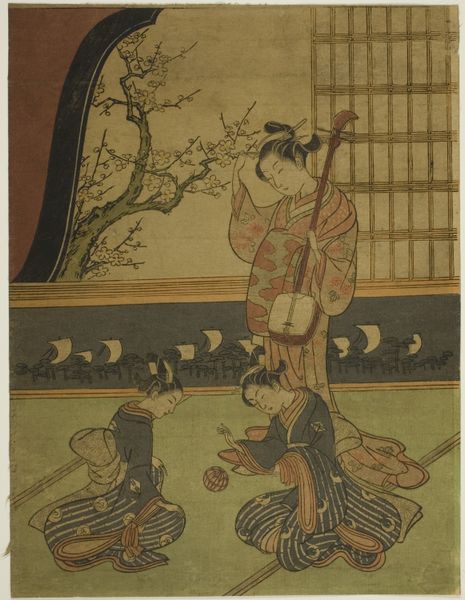
The Actors Bando Hikosaburo I as Araki Shozaemon and Nakamura Sukegoro I as Daidoji Tahatanosuke in the play "Chigozakura Futabajikki," performed at the Ichimura Theater in the tenth month, 1746 1746
0:00
0:00
print, woodblock-print
# print
#
asian-art
#
ukiyo-e
#
figuration
#
woodblock-print
#
genre-painting
Dimensions: 31.9 × 14.8 cm (12 9/16 × 5 13/16 in.)
Copyright: Public Domain
Curator: I'm immediately struck by the sense of drama, even chaos, held within the subtle greens and beiges of this print. Editor: That's quite astute. This woodblock print, created in 1746 by Torii Kiyonobu II, depicts actors Bando Hikosaburo I and Nakamura Sukegoro I in a scene from the play "Chigozakura Futabajikki," performed at the Ichimura Theater. It offers a glimpse into the vibrant theatrical world of the Edo period. Curator: Yes, the actors are recognizable but seemingly transformed by their symbolic roles. The figures holding the round fan like objects especially grab my attention with the calligraphy and odd bird-like form. Are these objects culturally significant within the depicted scene? Editor: Precisely. What you're picking up on is a snapshot of Kabuki culture finding mass appeal. The play, actors, even the theater, were extremely popular in the city of Edo. Kabuki, though, frequently navigated censorship due to its close association with pleasure districts and rumors concerning social scandals, thus shaping how such images were circulated. Curator: The actors themselves carry potent symbolism with specific expressions, and perhaps these fans are visual keys to decode this meaning for a wide public that understands how social transgression manifests within a popular theatrical production. How was this image made accessible and available for the everyday Japanese? Editor: These prints were produced in large quantities. While original paintings were commissioned by elites, these woodblock prints helped make the artistic expression accessible across social classes. They provided ordinary citizens a chance to collect portraits of popular actors, commemorate theatrical events, and stay connected to a bustling cultural landscape. Curator: In examining this print today, nearly three centuries later, I am reminded of how images serve as crucial containers and vehicles of meaning, emotion, and memory for a culture. Editor: And considering the social landscape surrounding Kabuki, they were not merely representations but carefully managed performances in print, subtly pushing societal boundaries while preserving the image of respectable entertainment. It’s amazing to reflect on this interplay across the ages.
Comments
No comments
Be the first to comment and join the conversation on the ultimate creative platform.
